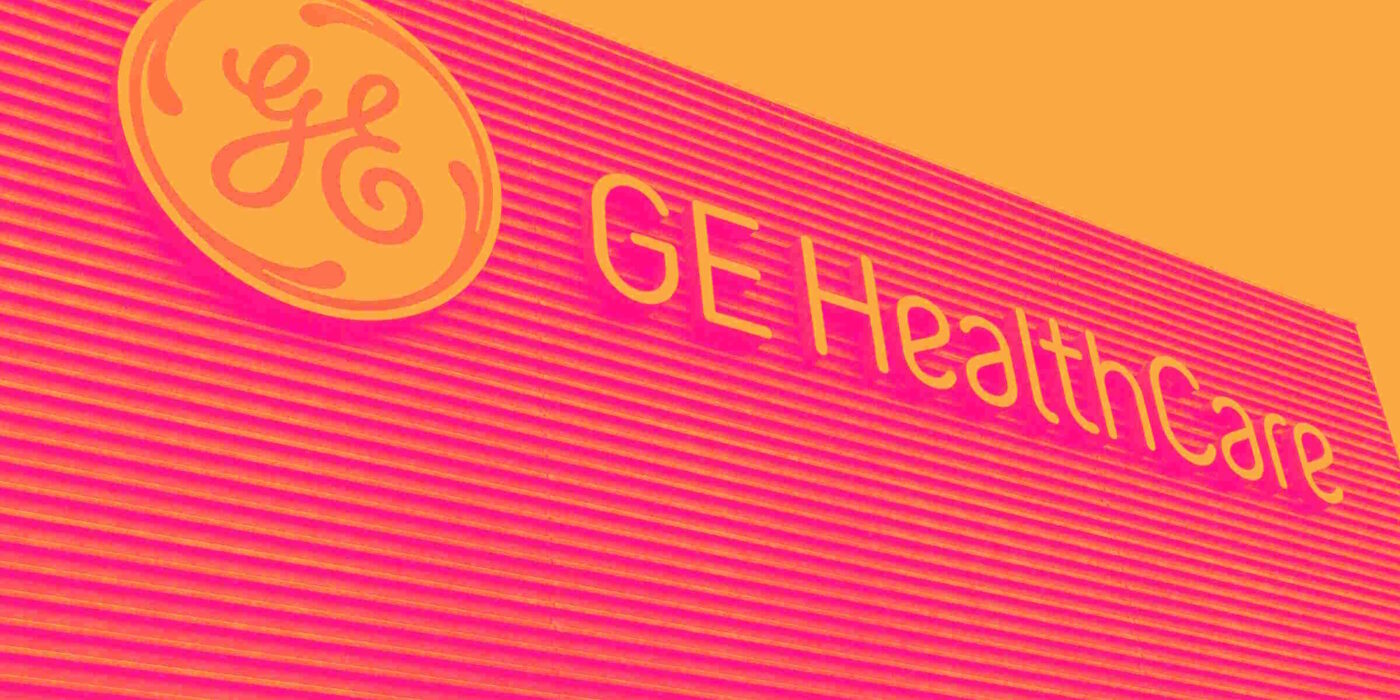
Healthcare technology company GE HealthCare Technologies (NASDAQ: GEHC) reported Q2 CY2025 results beating Wall Street’s revenue expectations, with sales up 3.5% year on year to $5.01 billion. Its non-GAAP profit of $1.06 per share was 15.5% above analysts’ consensus estimates.
Is now the time to buy GE HealthCare? Find out by accessing our full research report, it’s free.
GE HealthCare (GEHC) Q2 CY2025 Highlights:
- Revenue: $5.01 billion vs analyst estimates of $4.96 billion (3.5% year-on-year growth, 1% beat)
- Adjusted EPS: $1.06 vs analyst estimates of $0.92 (15.5% beat)
- Adjusted EBITDA: $690 million vs analyst estimates of $797.8 million (13.8% margin, 13.5% miss)
- Management raised its full-year Adjusted EPS guidance to $4.53 at the midpoint, a 13.2% increase
- Operating Margin: 13.1%, in line with the same quarter last year
- Free Cash Flow was $8 million, up from -$183 million in the same quarter last year
- Organic Revenue rose 2% year on year, in line with the same quarter last year
- Market Capitalization: $35.59 billion
GE HealthCare President and CEO Peter Arduini said, “We were pleased with solid orders and revenue performance in the second quarter across all segments, reflecting healthy customer investment in capital equipment. We also reported strong earnings performance while leveraging our lean capabilities and demonstrating progress on tariff mitigation. Overall, we believe we are driving long-term value through our strategic priorities and are well positioned operationally.”
Company Overview
Spun off from industrial giant General Electric in 2023 after over a century as its healthcare division, GE HealthCare (NASDAQ: GEHC) provides medical imaging equipment, patient monitoring systems, diagnostic pharmaceuticals, and AI-enabled healthcare solutions to hospitals and clinics worldwide.
Revenue Growth
Reviewing a company’s long-term sales performance reveals insights into its quality. Any business can put up a good quarter or two, but the best consistently grow over the long haul. Over the last four years, GE HealthCare grew its sales at a tepid 3% compounded annual growth rate. This was below our standard for the healthcare sector and is a rough starting point for our analysis.
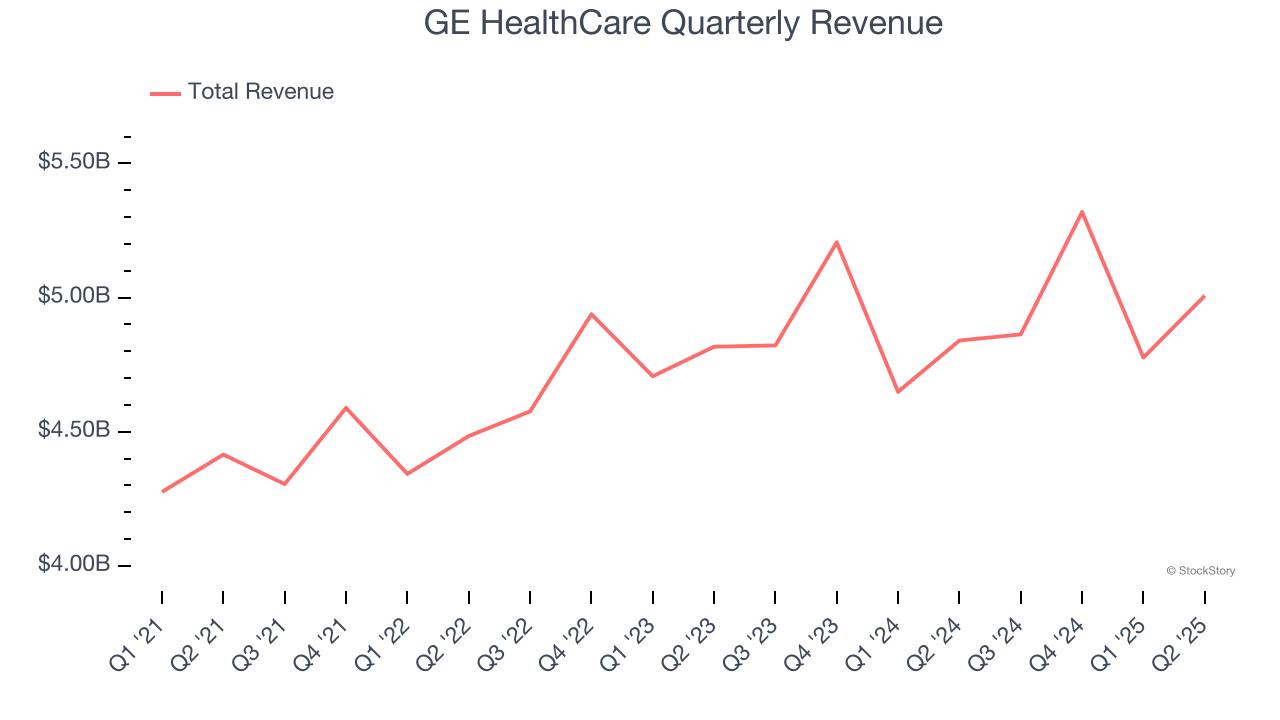
Long-term growth is the most important, but within healthcare, a stretched historical view may miss new innovations or demand cycles. GE HealthCare’s annualized revenue growth of 2.4% over the last two years aligns with its four-year trend, suggesting its demand was consistently weak. 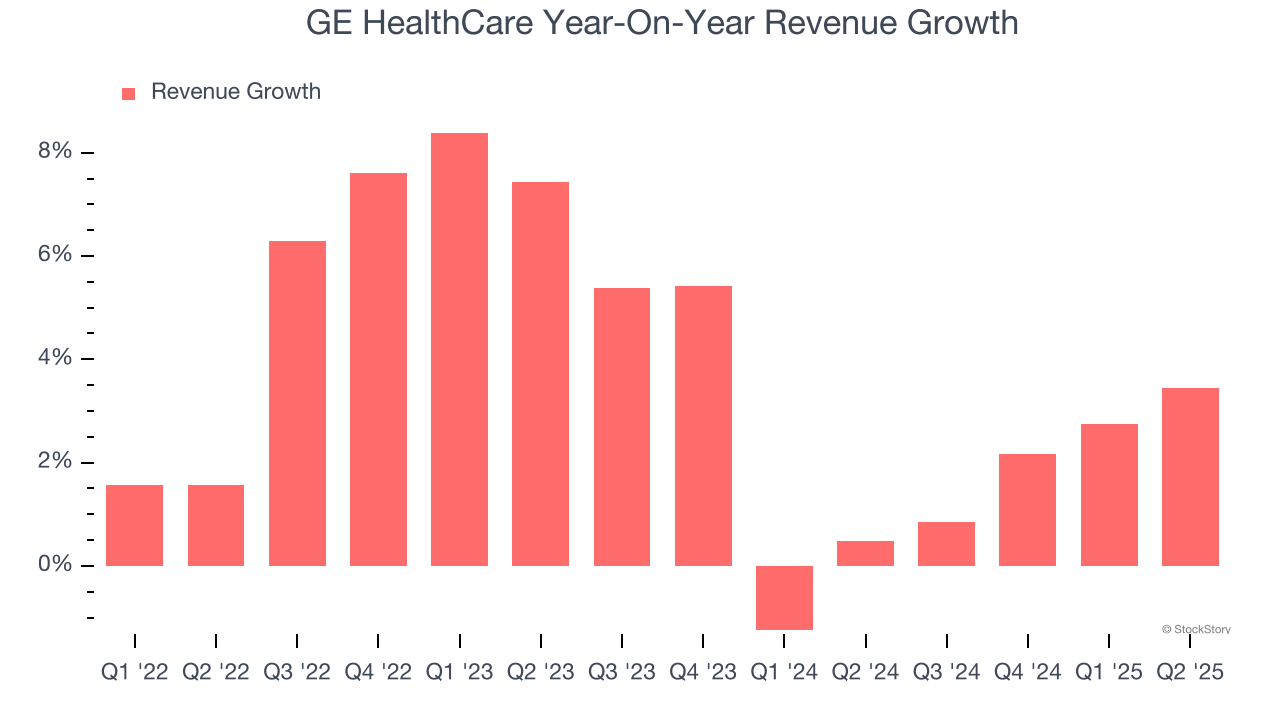
We can dig further into the company’s sales dynamics by analyzing its organic revenue, which strips out one-time events like acquisitions and currency fluctuations that don’t accurately reflect its fundamentals. Over the last two years, GE HealthCare’s organic revenue averaged 2.5% year-on-year growth. Because this number aligns with its normal revenue growth, we can see the company’s core operations (not acquisitions and divestitures) drove most of its results. 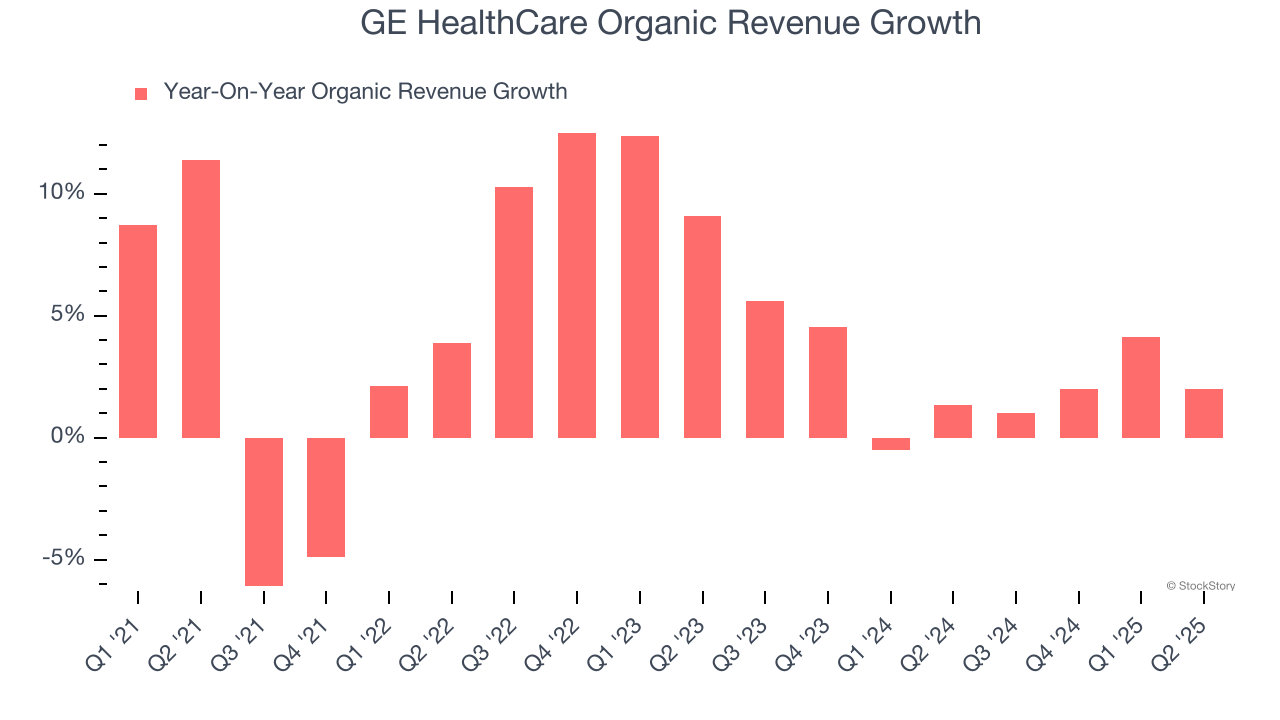
This quarter, GE HealthCare reported modest year-on-year revenue growth of 3.5% but beat Wall Street’s estimates by 1%.
Looking ahead, sell-side analysts expect revenue to grow 4% over the next 12 months. While this projection indicates its newer products and services will catalyze better top-line performance, it is still below the sector average.
Unless you’ve been living under a rock, it should be obvious by now that generative AI is going to have a huge impact on how large corporations do business. While Nvidia and AMD are trading close to all-time highs, we prefer a lesser-known (but still profitable) stock benefiting from the rise of AI. Click here to access our free report one of our favorites growth stories.
Operating Margin
Operating margin is one of the best measures of profitability because it tells us how much money a company takes home after subtracting all core expenses, like marketing and R&D.
GE HealthCare has done a decent job managing its cost base over the last five years. The company has produced an average operating margin of 13.7%, higher than the broader healthcare sector.
Analyzing the trend in its profitability, GE HealthCare’s operating margin decreased by 3.2 percentage points over the last five years. This raises questions about the company’s expense base because its revenue growth should have given it leverage on its fixed costs, resulting in better economies of scale and profitability.
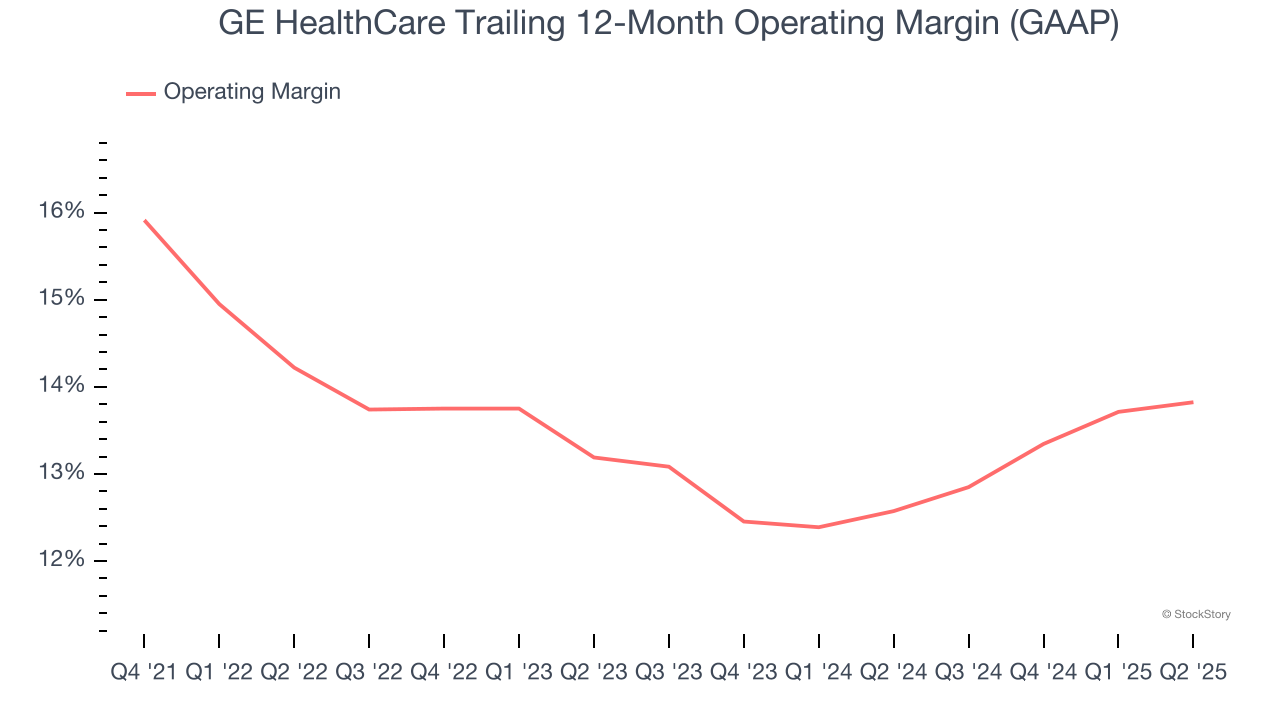
This quarter, GE HealthCare generated an operating margin profit margin of 13.1%, in line with the same quarter last year. This indicates the company’s overall cost structure has been relatively stable.
Earnings Per Share
Revenue trends explain a company’s historical growth, but the long-term change in earnings per share (EPS) points to the profitability of that growth – for example, a company could inflate its sales through excessive spending on advertising and promotions.
Sadly for GE HealthCare, its EPS declined by 3.7% annually over the last four years while its revenue grew by 3%. This tells us the company became less profitable on a per-share basis as it expanded.
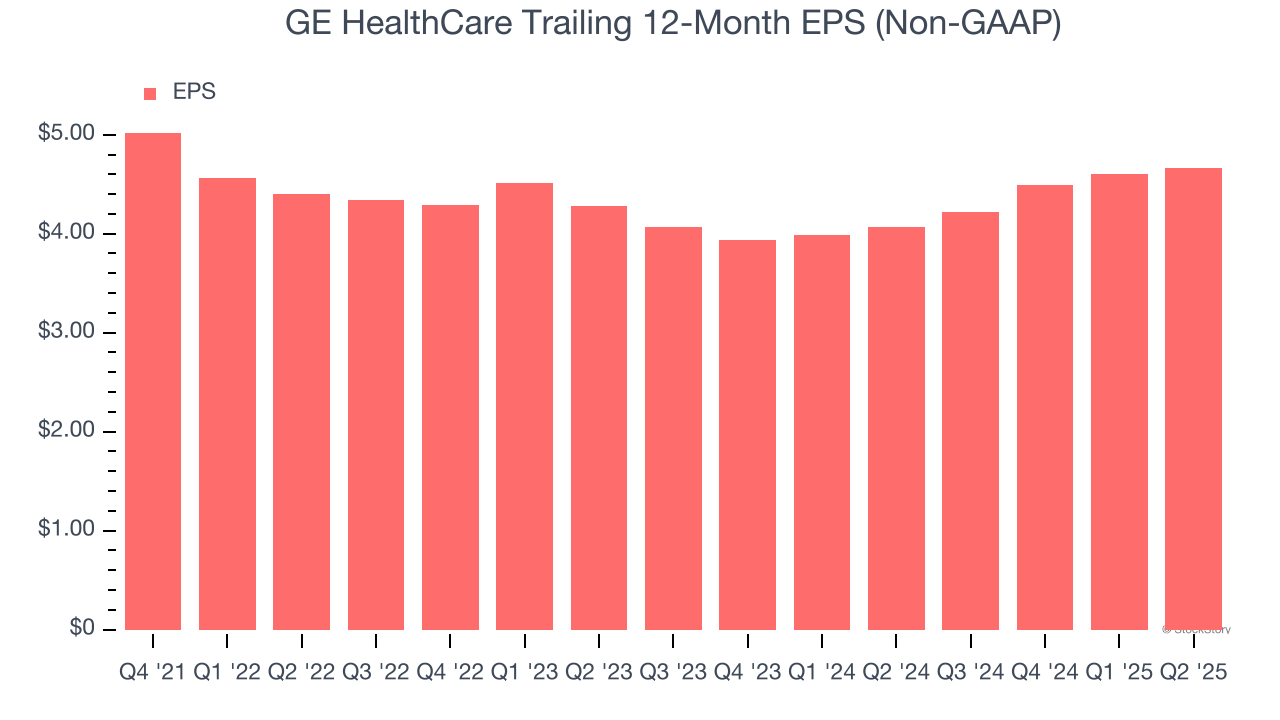
In Q2, GE HealthCare reported EPS at $1.06, up from $1 in the same quarter last year. This print easily cleared analysts’ estimates, and shareholders should be content with the results. Over the next 12 months, Wall Street expects GE HealthCare’s full-year EPS of $4.66 to shrink by 11.6%.
Key Takeaways from GE HealthCare’s Q2 Results
We were impressed by how significantly GE HealthCare blew past analysts’ full-year EPS guidance expectations this quarter. We were also glad its EPS outperformed Wall Street’s estimates. Overall, we think this was a solid quarter with some key areas of upside. The stock traded up 2.2% to $79.50 immediately after reporting.
GE HealthCare may have had a good quarter, but does that mean you should invest right now? What happened in the latest quarter matters, but not as much as longer-term business quality and valuation, when deciding whether to invest in this stock. We cover that in our actionable full research report which you can read here, it’s free.






